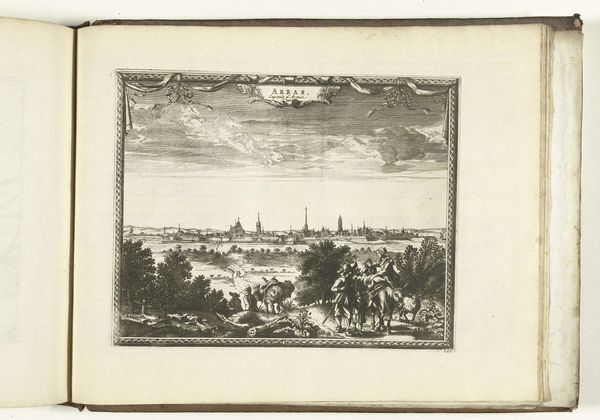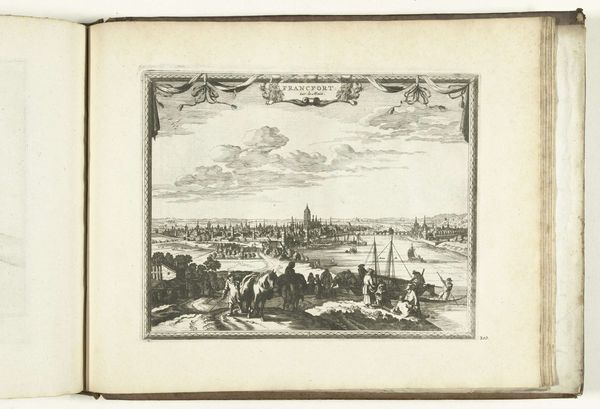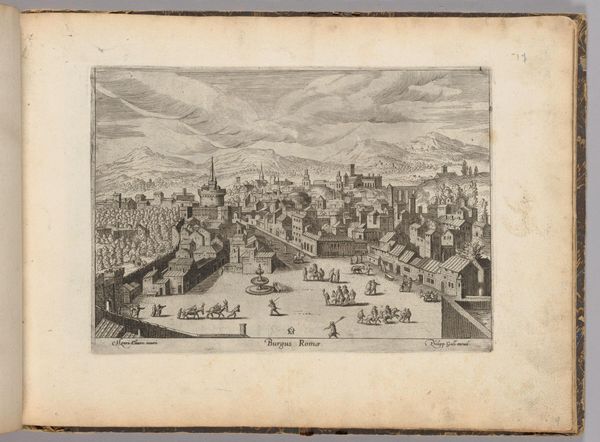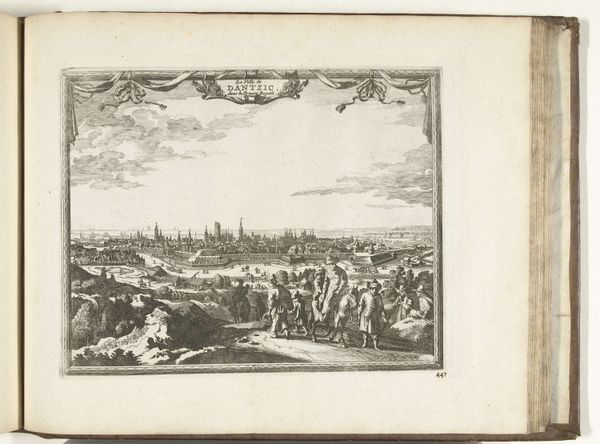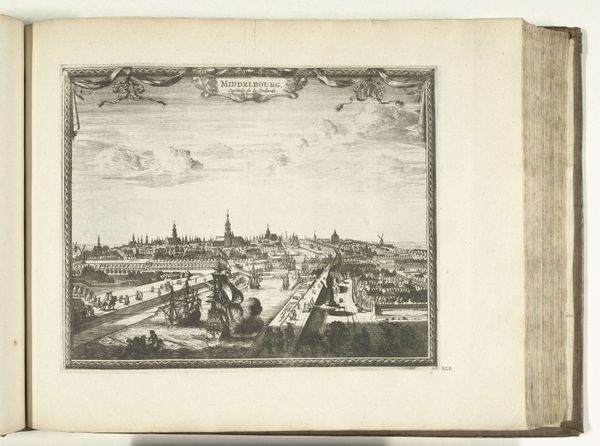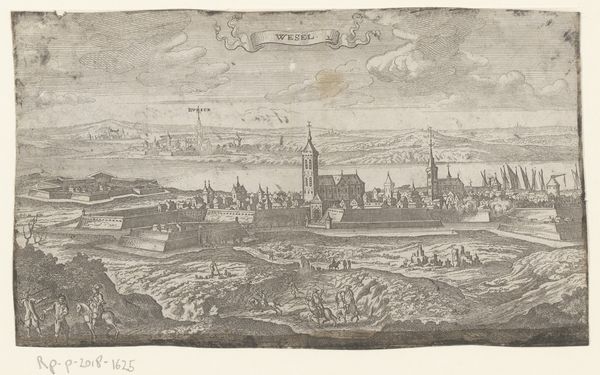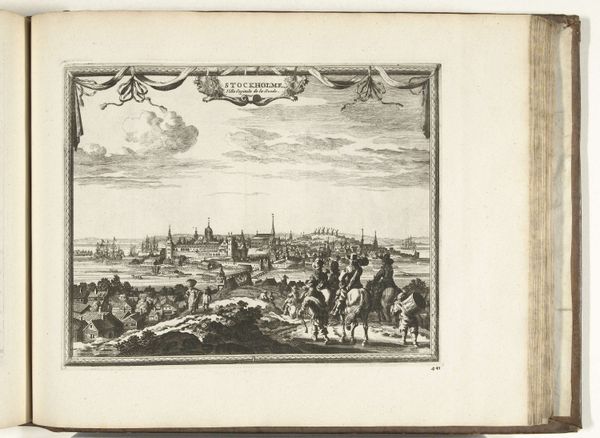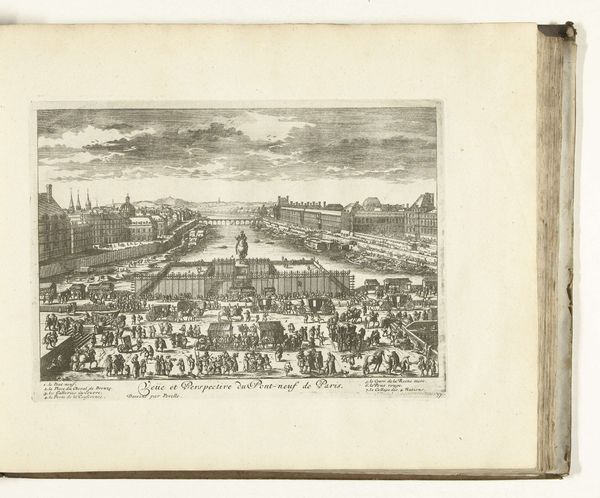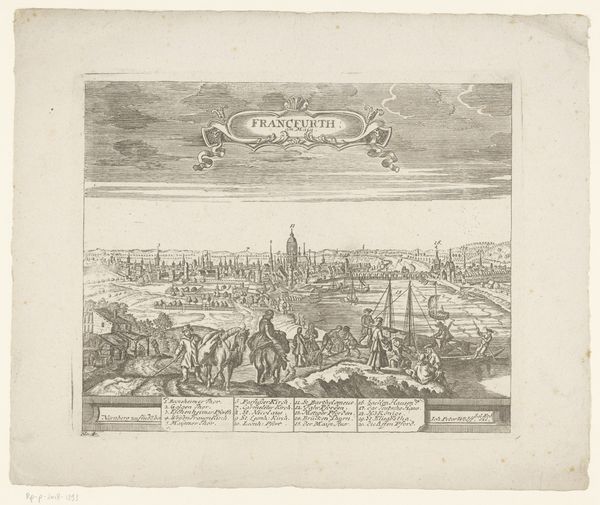
print, etching
#
baroque
# print
#
etching
#
cityscape
Dimensions: height 220 mm, width 273 mm
Copyright: Rijks Museum: Open Domain
Editor: This is "Gezicht op Sevilla, 1726", an etching from 1726 currently held at the Rijksmuseum. It gives a panoramic view of Seville, capturing the city's skyline in great detail. The print is quite intricate. How would you interpret this work in the context of its time? Curator: The piece gives a window into the way cities presented themselves, and wanted to be seen. How do the wealthy, commercial interests represented by those buildings impact daily life for others in that society? Who benefited, and who did not? Think about the labour needed to build these structures, or where this image would be displayed, and for whom. Editor: That's fascinating. I hadn't thought about it in terms of the city’s self-representation and its economic inequalities. Curator: Exactly. What story does the inclusion of the people on the road tell? Consider that many would not have even been able to afford a print like this of their own city. Who is able to participate in this urban narrative? What does that say about early modern Seville? Editor: It seems to highlight the contrast between those who live within the city and contribute to its workings and those who profit from it, almost like they are in separate worlds in one picture. Curator: Precisely. It invites us to question not only what is shown, but also what remains unseen or overlooked in this seemingly objective cityscape. And from whose perspective this "objective" truth is told. Editor: I hadn't considered the print as an active statement of those with money and power. Curator: Right. Prints like this are never neutral documents. Recognizing this helps us deconstruct how power and representation intertwine, both historically and in contemporary visual culture. Editor: Thank you; it really helps to understand art as an active historical record.
Comments
No comments
Be the first to comment and join the conversation on the ultimate creative platform.

